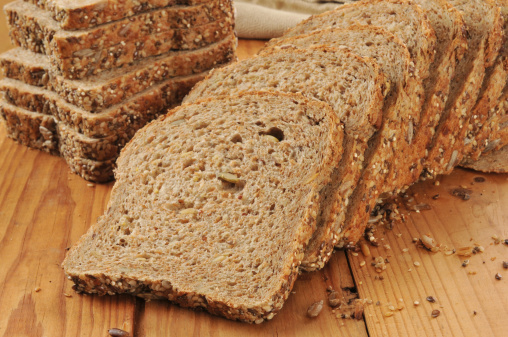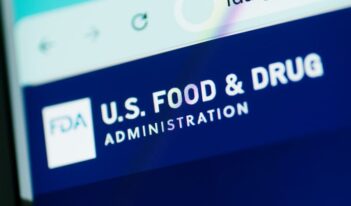
The FDA’s gluten-free labeling rule may lead manufacturers to inform some consumers while misleading others.
Thanks in part to a rule issued last summer by the U.S. Food and Drug Administration (FDA), “gluten-free” labels can now be found plastered on products ranging from pet food to Girl Scout cookies.
In issuing its new rule for labeling foods “gluten-free,” the FDA has provided invaluable guidance to those who need to avoid gluten in their diets for health reasons. But as the demand for gluten-free foods continues to grow in popularity among the general American public, the FDA’s rules may also be supporting the misguided idea that gluten-free foods are healthier for everyone.
The FDA issued a final rule defining “gluten-free” for voluntary use in labeling foods in August of last year. The agency promulgated the rule in hopes that individuals with celiac disease, an autoimmune condition triggered by ingesting even small amounts of gluten, would be able to make safer food choices after consulting labels.
The regulations set a gluten limit of 20 parts per million (ppm)—or 20 milligrams of gluten per kilogram of food—for foods that manufacturers could label “gluten-free.” Manufacturers may only label a food “gluten-free” if it does not contain any type of wheat, rye, barley, or combination of these grains or an ingredient derived from these grains that still contains gluten. Foods that inherently contain no gluten, such as fruits, vegetables, and hummus, may also use the “gluten-free” moniker if they meet the 20 ppm threshold.
Health organizations and advocates for individuals with celiac disease responded positively to the FDA’s new rule. Andrea Levario, Executive Director of the American Celiac Disease Alliance, called the FDA rule a “huge victory for people with celiac disease.” The Mayo Clinic and the American Society for Nutrition have similarly viewed the new rule as a significant aid for celiac sufferers making food purchases.
However, at the same time that the FDA rule is needed to provide better information to individuals with celiac disease, some experts warn that many individuals who do not suffer from celiac disease are mistakenly starting to equate gluten-free food with healthier fare. As one food industry consultant remarked in light of the FDA’s ruling, “People lacking the basics of food and nutrition education..may continue to believe ‘gluten-free’ to be synonymous with ‘better for you’ and not realize that [gluten-free products] are essential for a group of people with celiac [disease].”
Earlier this year, the New York Times reported that “gluten-free” has become the diet du jour and that gluten-free business is booming. Eleven percent of U.S. households now report buying gluten-free food products—up from just 5% in 2010—and last year’s sales totaled $10.5 billion. While presumably some of this growth stems from celiac sufferers who are now better able to identify foods that are safe for them, it appears that gluten-tolerant consumers, not celiac sufferers, are driving this expanding market. Indeed, a recent video by Jimmy Kimmel drew particular attention to the burgeoning popularity and cultural visibility of gluten-free diets, especially amongst those who are unaware of what gluten is and what alleged health effects they think they gain by avoiding it.
In a survey, close to 30 percent of American adults reported wanting to reduce gluten intake—representing upwards of 70 million individuals. By comparison, there are an estimated 1.8 million celiac sufferers in the U.S. (less than 1% of population) and an estimated additional 18 million Americans (6% of population) who suffer from gluten sensitivity, a less serious condition.
In response to the growing popularity of gluten-free diets, some nutritionists have expressed concern about the FDA allowing inherently gluten-free foods, like fruits and water, to use the gluten-free label. The FDA actually appeared to take a different stance on this issue in its initial 2007 proposed rule. At that time, the agency proposed that for inherently gluten-free foods to use the label, a manufacturer must indicate that its foodstuff is inherently gluten-free. However, some commenters on the proposed rule, among them the American Celiac Disease Alliance, worried that this language could mislead celiac sufferers by suggesting that particular foods or food categories are always gluten-free, even when cross-contamination with gluten-containing foods might occur.
Acknowledging these concerns, the FDA modified the rule to its current form. While this change assists celiac sufferers, it may grant the imprimatur of an FDA-approved gluten-free label to numerous additional products and may expand the misconceived notion that gluten-free is always better. Some foods, like soda or tortilla chips, may well lack both gluten and nutrition.
Experts caution that, for those not suffering from celiac disease or gluten sensitivity, a gluten-free diet may be harmful. Gluten-free diets make it harder to meet dietary requirements for vitamins, minerals, and fiber. Some gluten-free products add extra sugar and fat to simulate the texture of products with gluten. Teens who go gluten-free reportedly are more likely to become overweight and consume less fiber, calcium, and iron. In addition, gluten-free products may sometimes be significantly more expensive than alternatives.
Of course, the spread of some health misconceptions about going gluten-free may be the unavoidable downside of an otherwise vital new rule. Yet however justified the new labels may be for informing consumers about valuable content, the new-found prominence given to gluten-free claims on food packaging also has the potential to mislead many other consumers into thinking that they are automatically choosing a healthier diet by selecting gluten-free food, when in fact they may be doing the opposite.
This essay is the second installment in The Regulatory Review’s three-part series, Regulatory Essay Competition Winners.



